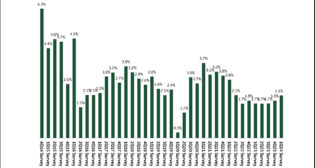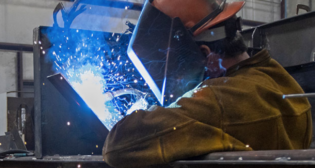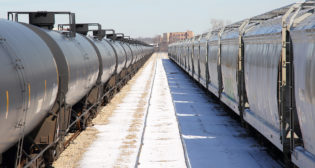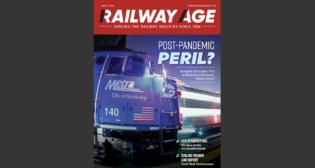
3Q railcar market “relatively stable”
Written by William C. Vantuono, Editor-in-Chief
In spite of a slowing in the movements of major commodities, demand for railcars was relatively stable in this year’s third quarter, according to the most recent report issued by Economic Planning Associates (EPA).
“Despite of an easing in orders from the second quarter, which was inflated by the 6,000 cars placed with Greenbrier by Mitsubishi with deliveries scheduled over a five-year period, assemblies and backlogs held up well in the third quarter,” said EPA principal Peter Toja. “At current production rates, end-of-September backlogs of 64,253 cars represent 5.8 quarters of future assemblies.”
Toja said that strength in mid–sized and small-cube covered hoppers, intermodal equipment, and Class F cars has been offset by modest weaknesses in box cars, hi-cube covered hoppers and tank cars. “As a result, we are lowering our 2017 total railcar deliveries from 43,250 to 42,500,” he said. “At the same time, we have raised our 2018 deliveries estimate from 45,500 to 46,250 cars.”
Longer term, Toja said that railcar deliveries will expand from 49,500 in 2019 to 60,000 in 2022.
After a strong start, railroad traffic moderated in the third quarter. As a result, commodity carloadings through the third quarter were running 3.8% ahead of the 2016 pace. At the same time, intermodal movements have strengthened and were running 3.5% ahead of last year’s pace.
“A closer inspection of the data indicates that a significant slowing in grain exports, a weak light vehicle production environment, and a continued downward drift in petroleum loadings are primarily responsible for the easing in commodity movement growth,” said Toja. “Nonetheless, we have upbeat revenue and income statements from the railroads.”
“We anticipate that continued strength in coal, aggregates, metallic and nonmetallic minerals, and primary metal products will offset the weakening environment of grain, motor vehicles and petroleum during the remainder of this year,” Toja noted. “We now look for 2.6% growth in commodity haulings this year and a stronger expansion of 2.9% in 2018. From 2019 through 2022, commodity haulings will advance 2.0-2.5% per year.”
EPA’s figures take into account data on railcar orders, deliveries and backlogs complied by ARCI (American Railway Car Institute Committee of the Railway Supply Institute). Download ARCI’s third-quarter 2017 report at the link below.



